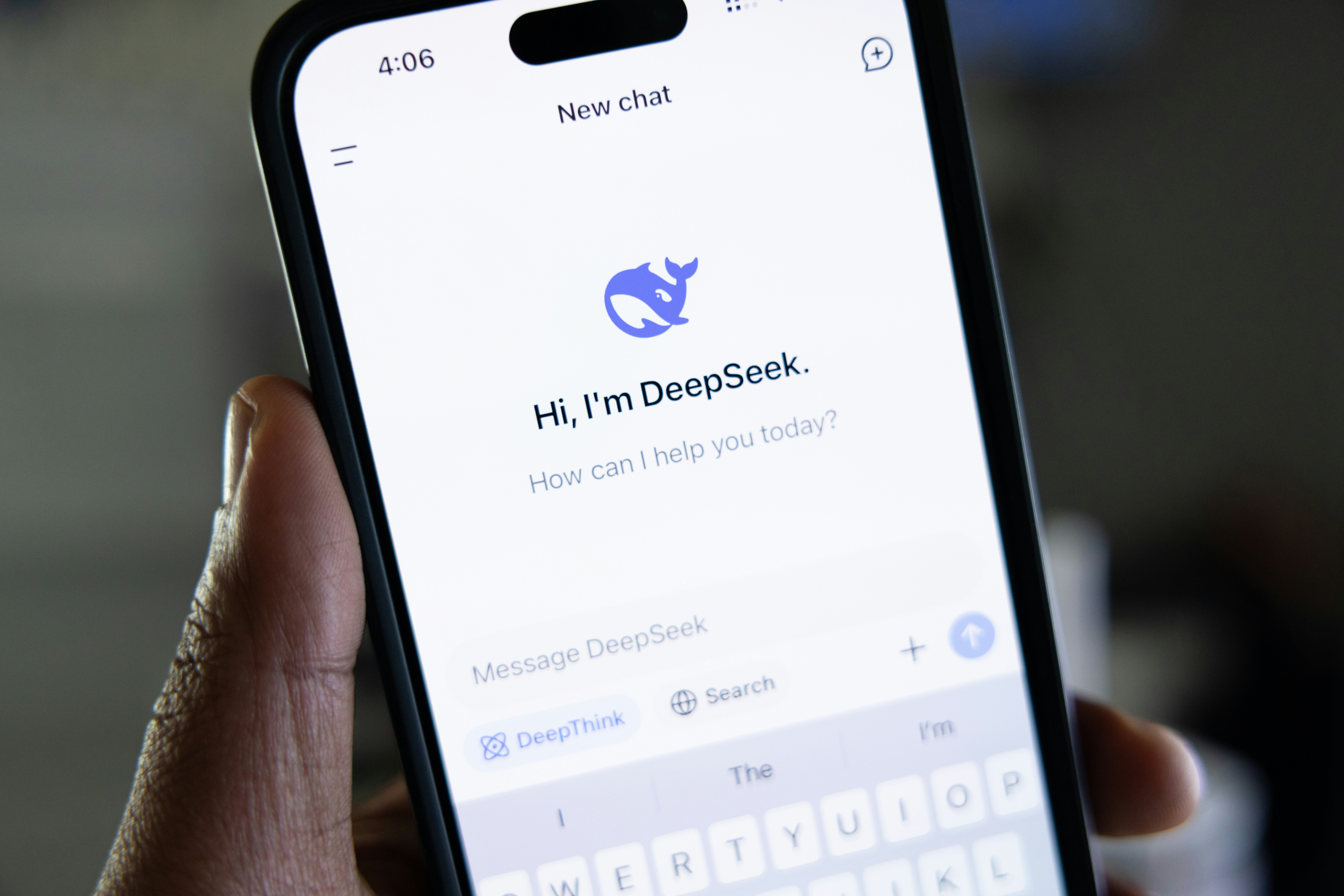- Published on
DeepSeek: why is it causing a stir?
- Authors

- Name
- caphe.dev
- @caphe_dev

TL;DR: DeepSeek, a Chinese AI startup, has made global waves with its language model R1, surpassing ChatGPT while only costing $5.6 million to develop. Their success is based on unique optimization technology that saves 80% of computational resources, breaking the notion of the correlation between cost and AI performance. This event is reshaping the tech industry, impacting global financial markets, and ushering in a new era for sustainable AI development.
Note: This is just an illustrative chart based on information that DeepSeek has surpassed ChatGPT to take the number one spot on the App Store and has over 4,700 applications integrating their technology. Specific market share figures are not mentioned in the article.
DeepSeek: Why Is It Making Waves in the World of Artificial Intelligence?
In the early months of 2025, the name DeepSeek has become a global phenomenon, shaking the artificial intelligence (AI) industry and challenging the monopoly of American tech giants. The rise of the R1 AI model from this Chinese startup is not just a story of breakthrough technology but also reflects a new power struggle in the AI field. The analysis below will clarify the key factors behind the DeepSeek craze, from technology strategies to global economic-political impacts.
Context of Emergence and Rapid Development
DeepSeek was founded in 2023 in Hangzhou by Liang Wenfeng, a former student of Zhejiang University[3][8]. Starting as a young startup in the AI field, the company chose the path of developing an open-source large language model (LLM), completely different from the proprietary approaches of OpenAI or Google[8]. This allowed the global community to participate in developing and optimizing the system, creating a rapid spillover effect.
The turning point came in January 2025 when DeepSeek announced the R1 model - a chatbot with superior natural language processing capabilities[1][6]. Within just two weeks, this application surpassed ChatGPT to take the number one spot on the App Store in the U.S.[1][4], an unprecedented achievement for an AI product from China. This rapid development has astonished experts, especially considering that the company only took 2 months and $5.6 million to complete R1[3][6], while OpenAI needed billions of dollars and many years of research for ChatGPT[6][8].
Breakthrough Technology: Optimizing Performance at Low Cost
In contrast to the trend of "bloating" AI models by increasing the size of training data and the number of processing chips, DeepSeek R1 applies Reasoning-Time Computation[3][8]. This technology allows the system to activate only the necessary parts of the neural network for each specific query, reducing computational resources by 80% compared to traditional methods[3]. As a result, R1 achieves performance equivalent to OpenAI's GPT-4 but consumes only 3.6% of the energy[6], while also having a response speed that is 40% faster[3].
Another key factor lies in the hardware strategy. Instead of using Nvidia's expensive A100/H100 chips, which are restricted from being exported to China by the U.S., DeepSeek utilizes older H800 chips with lower performance[6][8]. By optimizing algorithms, the company has demonstrated that it can achieve high performance without relying on top-tier hardware[4][6]. This breaks the traditional notion of the correlation between chip power and AI quality, opening up a more sustainable development path for the industry.
Market Shockwaves on Wall Street
The emergence of DeepSeek has caused widespread repercussions on Wall Street. On January 27, 2025, Nvidia's stock - the company supplying 80% of global AI chips - plummeted by 17%, losing $600 billion in market capitalization[4][6]. ASML (Netherlands) and Broadcom (U.S.) also experienced declines of 6% and 17%, respectively[4], reflecting investor concerns about the future demand for high-end chips. Even energy companies like GE Vernova and Vistra saw declines of 21-28% due to forecasts of reduced electricity demand for AI data centers[4].
Analysts believe this is a direct consequence of DeepSeek's energy efficiency. While traditional AI data centers consume electricity equivalent to a small city[8], DeepSeek's model demonstrates the ability to operate at scale with more modest infrastructure[6]. This raises questions about the sustainability of business models based on selling expensive chips, forcing companies like Nvidia to reconsider their product strategies.
Reactions from Tech Giants and Governments
The DeepSeek wave has prompted American tech leaders to take action. Demis Hassabis (CEO of Google DeepMind) acknowledged this as a "wake-up call" about the risk of technological lag[1][6], while Microsoft and Meta are ramping up their internal AI model optimization projects[4]. Notably, President Donald Trump has called for increased investment in AI, viewing DeepSeek as a threat to U.S. national security[3][6].
On the Chinese side, DeepSeek's success is seen as evidence of the "self-reliance" strategy amid tightening U.S. high-tech export controls. The successful development of a powerful LLM on older chip platforms has partially neutralized U.S. sanctions[3][6], opening the prospect for China to establish its own AI standards independent of the West.
Spillover Effects in the User Community
Not only confined to laboratories, the DeepSeek craze has truly exploded among the public. In China, platforms like Weibo and Xiaohongshu have witnessed a wave of guides on "making money from DeepSeek"[7], ranging from selling cracked software to AI fortune-telling services[7]. This phenomenon reflects the strong penetration of AI into everyday life while also posing challenges regarding the management of unofficial applications.
On an international level, DeepSeek's provision of free APIs has attracted thousands of startups integrating this technology into their products[8]. As of February 2025, there are over 4,700 commercial applications using the DeepSeek platform[8], a number that OpenAI took 18 months to achieve. This openness not only expands their influence but also creates a diverse development ecosystem around their technology.
Distinct Development Philosophy and Long-Term Vision
Unlike Western competitors focusing on closed models, DeepSeek is steadfast in its open-source philosophy. The company not only publishes the entire model architecture but also shares a training dataset of 14.8 trillion tokens[6][8]. This approach, according to Marc Andreessen (American tech investor), is a "gift of knowledge to humanity"[3], promoting global collaboration in AI development.
In terms of personnel, DeepSeek applies a multidisciplinary recruitment policy, prioritizing young researchers from social sciences and arts[8]. This strategy helps their AI model gain a multidimensional understanding of the world, overcoming the "mechanical" weaknesses of many previous chatbots. As a result, R1 shows a clear advantage in tasks requiring critical thinking and creativity[1][3].
Challenges and Future Prospects
Despite shaking the market, DeepSeek still faces many barriers. Data security issues and the ability to control harmful content from the open-source model are concerns for U.S.-EU authorities[4][8]. Additionally, the pressure to maintain technological advantages amid U.S. corporations ramping up cost optimization research is a significant challenge[6].
However, many experts like Oren Etzioni (former CEO of the Allen Institute) believe that DeepSeek has opened a new era for AI - where efficiency and sustainability are prioritized[1][5]. This trend could lead to a significant shift in technology investment, as venture capital funds pivot towards "savings" AI startups instead of those with massive capital consumption[4][6].
Conclusion: A Turning Point in the Global AI Race
The DeepSeek craze is not merely the success of a startup but reflects a systemic change in the AI industry. By combining algorithm optimization, an open-source philosophy, and clever hardware strategies, this Chinese company has demonstrated the feasibility of a high-performance, low-cost AI model. Their success not only challenges American tech giants but also raises questions about the sustainability of the "bloated" trend in AI development. As technological boundaries continue to be pushed, DeepSeek may become a model for the next generation of AI - smarter, more economical, and democratizing access.
Sources